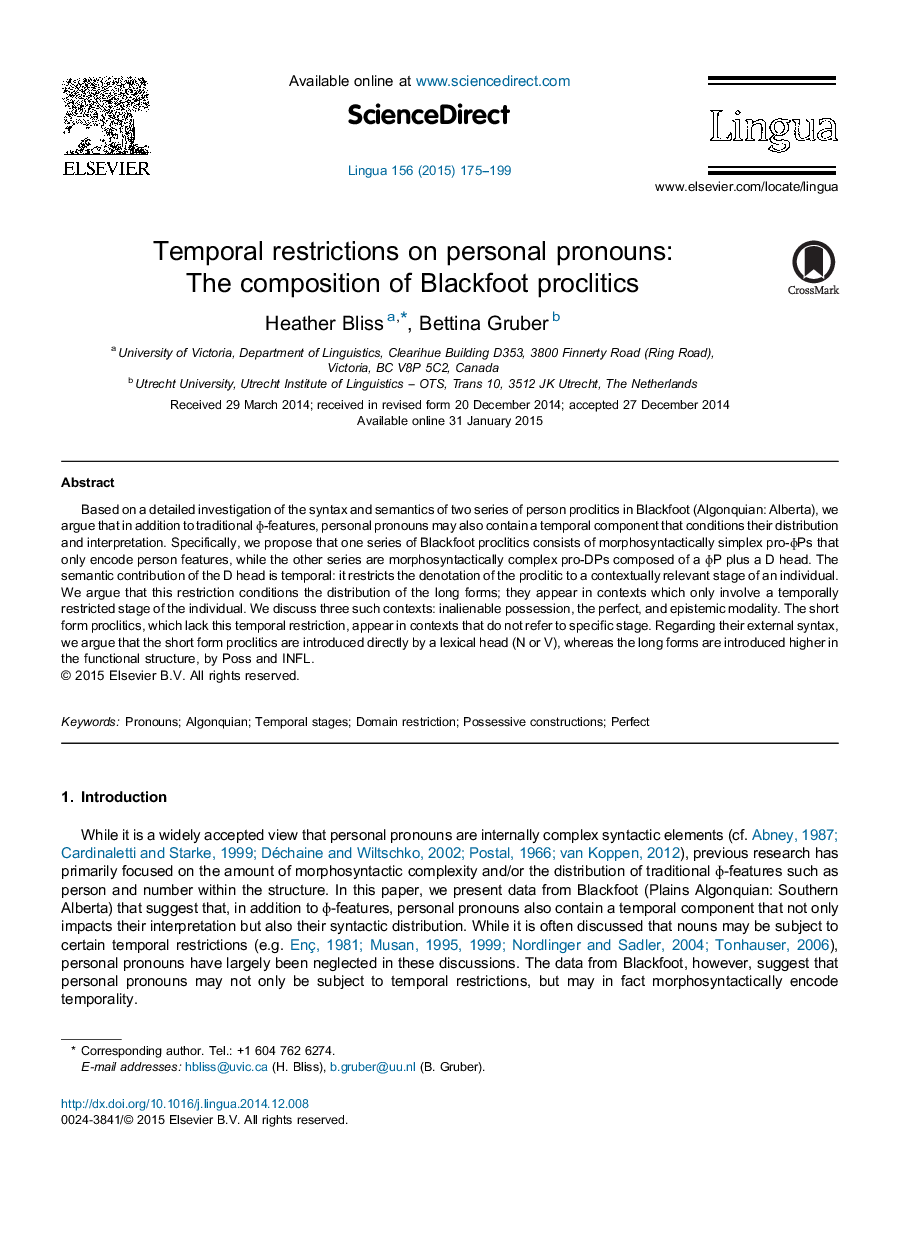| Article ID | Journal | Published Year | Pages | File Type |
|---|---|---|---|---|
| 935360 | Lingua | 2015 | 25 Pages |
•In addition to ɸ-features, personal pronouns may contain a temporal component.•The morphosyntax of Blackfoot short and long proclitics conditions their alternation.•Blackfoot short form person proclitics are pro-ɸPs; long form proclitics are pro-DPs.•D in Blackfoot person proclitics restricts the interpretation to a relevant stage.•A temporal restriction on pro-DPs conditions their syntactic distribution.
Based on a detailed investigation of the syntax and semantics of two series of person proclitics in Blackfoot (Algonquian: Alberta), we argue that in addition to traditional ɸ-features, personal pronouns may also contain a temporal component that conditions their distribution and interpretation. Specifically, we propose that one series of Blackfoot proclitics consists of morphosyntactically simplex pro-ɸPs that only encode person features, while the other series are morphosyntactically complex pro-DPs composed of a ɸP plus a D head. The semantic contribution of the D head is temporal: it restricts the denotation of the proclitic to a contextually relevant stage of an individual. We argue that this restriction conditions the distribution of the long forms; they appear in contexts which only involve a temporally restricted stage of the individual. We discuss three such contexts: inalienable possession, the perfect, and epistemic modality. The short form proclitics, which lack this temporal restriction, appear in contexts that do not refer to specific stage. Regarding their external syntax, we argue that the short form proclitics are introduced directly by a lexical head (N or V), whereas the long forms are introduced higher in the functional structure, by Poss and INFL.
